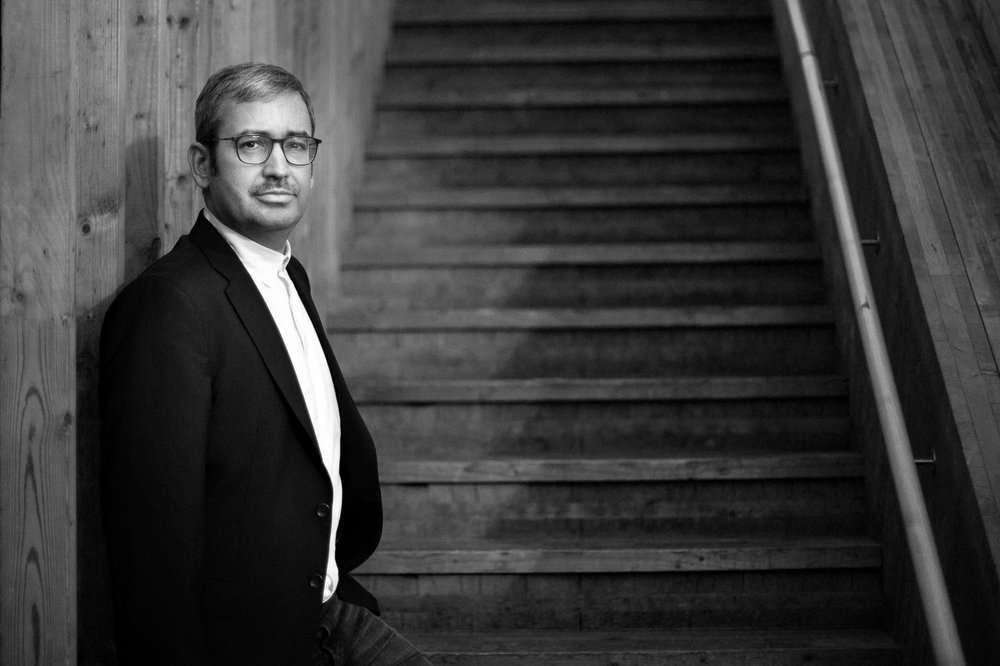New researcher to investigate novel ways of building with timber
Markus Hudert is a new assistant professor at the Department of Engineering at Aarhus University. With his background in architecture and research into timber structures, he will introduce new knowledge to the area of tectonic design, an important area of research at the university.

Embodying the spirit of the age, encapsulating the Zeitgeist. This is what originally attracted Markus Hudert to architecture: That ever since antiquity, the cultural epochs of history have been reflected in their buildings.
Architecture is an open window to the whims, technology, culture and beliefs of the day, and today it remains a showcase for those self-same beliefs.
"One of the intriguing capacities of architecture is how it merges cultural and technological aspects throughout the ages. Today, for example, there is an increasingly strong focus on sustainability and circular economy, and this thinking is reflected in our architecture," says Markus Hudert, a new assistant professor at the Department of Engineering at Aarhus University.
Markus Hudert arrives with a background in architecture from Coburg University of Applied Sciences and Städelschule academy of fine arts in Frankfurt. After about four years as a practicing architect, his interest moved from established design practices to material and assembly driven strategies and thus to the world’s oldest, and yet most popular building material: wood.
(The article continues below the picture)

Photo: Melissa Yildirim, AU Foto.
"That's why I stepped into academia and did my PhD on novel timber structures, working on the intersection between architecture and structural engineering. I was fascinated by the possibility of using the particular properties of wood as a driver in design processes. It is an exciting material, both as an organism and as a construction material. Living wood continually adapts to its surroundings and changes in its living conditions,” says Markus Hudert.
He continues:
“By continuously developing new types of wood-based materials with properties that match our needs, we are, in principle, still mimicking nature. At the same time, these new materials allow us to overcome some of the limitiations of naturally grown wood. For example, traditional timber structures employ linear elements, whereas many contemporary multi-story buildings are enabled by planar timber components. New architectural possibilities will emerge from combining novel wood-based materials with digital design and fabrication tools.”
Wood is a renewable resource. Moreover, due to their discrete nature, it is relatively easy to dismantle timber structures, which facilitates the reuse of their components. It is this discrete character that also makes them interesting in the context of tectonic design, the field of research that Markus Hudert is now focusing on at Aarhus University.
(The article continues below the picture)

Photo: Melissa Yildirim, AU Foto.
His PhD took him to École Polytechnique Fédérale de Lausanne (EPFL) in Switzerland, after which he worked as a postdoc at Technische Universität Braunschweig and Aalto University, finally moving to Singapore University of Technology and Design, before he applied for a position in Denmark.
"Parts of Asia are slowly waking up to, or rather rediscovering the advantages of building in wood. However, Denmark is currently one of the best places to conduct research on timber structures, because so much is going on right here, right now. This is where we can help make a difference in the buildings and construction sector, which is currently responsible for more than a third of the global CO2 emissions. I believe we can do a lot about this, especially regarding the embedded carbon, by using more wood in buildings," he says.
Assistant Professor Markus Hudert is also the co-editor of the book “Rethinking Wood: Future Dimensions of Timber Assembly,” which is a compilation of forward-looking approaches towards wood-based materials and timber construction.
